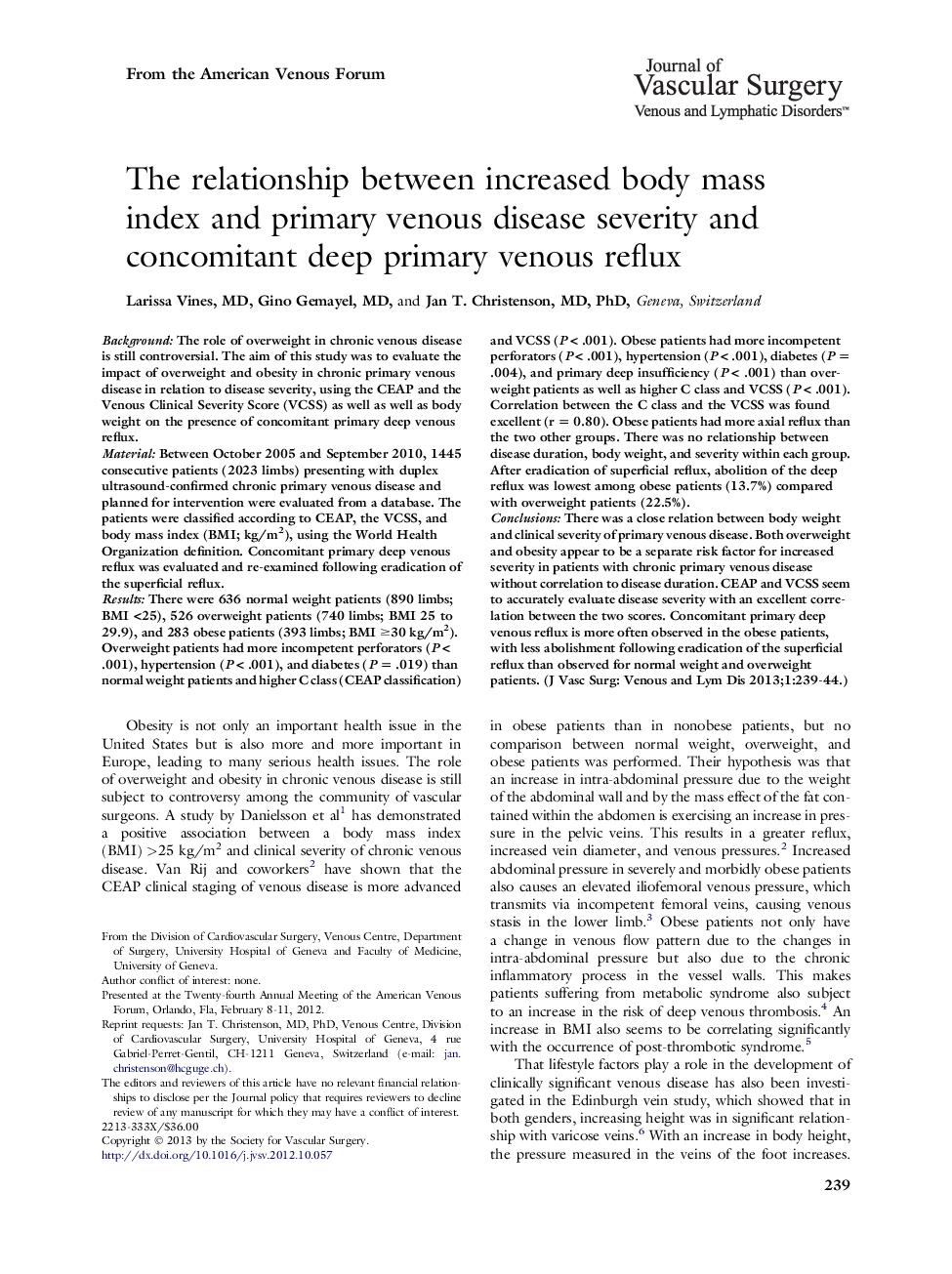| کد مقاله | کد نشریه | سال انتشار | مقاله انگلیسی | نسخه تمام متن |
|---|---|---|---|---|
| 2998150 | 1180226 | 2013 | 6 صفحه PDF | دانلود رایگان |

BackgroundThe role of overweight in chronic venous disease is still controversial. The aim of this study was to evaluate the impact of overweight and obesity in chronic primary venous disease in relation to disease severity, using the CEAP and the Venous Clinical Severity Score (VCSS) as well as well as body weight on the presence of concomitant primary deep venous reflux.MaterialBetween October 2005 and September 2010, 1445 consecutive patients (2023 limbs) presenting with duplex ultrasound-confirmed chronic primary venous disease and planned for intervention were evaluated from a database. The patients were classified according to CEAP, the VCSS, and body mass index (BMI; kg/m2), using the World Health Organization definition. Concomitant primary deep venous reflux was evaluated and re-examined following eradication of the superficial reflux.ResultsThere were 636 normal weight patients (890 limbs; BMI <25), 526 overweight patients (740 limbs; BMI 25 to 29.9), and 283 obese patients (393 limbs; BMI ≥30 kg/m2). Overweight patients had more incompetent perforators (P < .001), hypertension (P < .001), and diabetes (P = .019) than normal weight patients and higher C class (CEAP classification) and VCSS (P < .001). Obese patients had more incompetent perforators (P < .001), hypertension (P < .001), diabetes (P = .004), and primary deep insufficiency (P < .001) than overweight patients as well as higher C class and VCSS (P < .001). Correlation between the C class and the VCSS was found excellent (r = 0.80). Obese patients had more axial reflux than the two other groups. There was no relationship between disease duration, body weight, and severity within each group. After eradication of superficial reflux, abolition of the deep reflux was lowest among obese patients (13.7%) compared with overweight patients (22.5%).ConclusionsThere was a close relation between body weight and clinical severity of primary venous disease. Both overweight and obesity appear to be a separate risk factor for increased severity in patients with chronic primary venous disease without correlation to disease duration. CEAP and VCSS seem to accurately evaluate disease severity with an excellent correlation between the two scores. Concomitant primary deep venous reflux is more often observed in the obese patients, with less abolishment following eradication of the superficial reflux than observed for normal weight and overweight patients.
Journal: Journal of Vascular Surgery: Venous and Lymphatic Disorders - Volume 1, Issue 3, July 2013, Pages 239–244